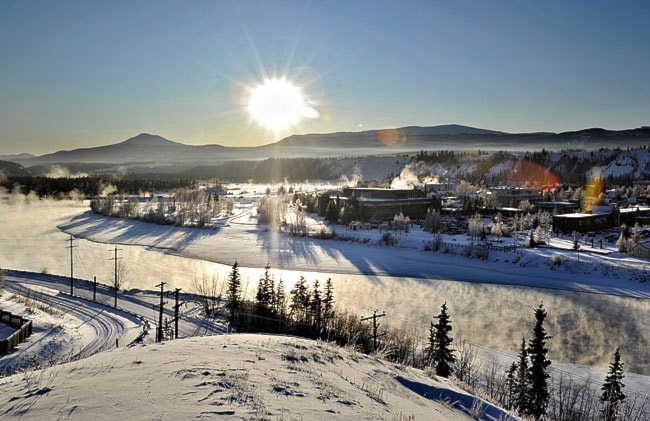Whitehorse is the first community in the territory to adopt a climate change adaptation plan.
While it may appear that the nonbinding municipal commitment lacks teeth, both city officials and the “green guys” behind the plan are marking it as a milestone.
“This is not a bylaw or anything like that,” said city manager Dennis Shewfelt. “It’s a plan.”
But before you start scoffing at the bureaucratic archetype of planning to plan a plan, know that the handbook on how to incorporate green tendencies has already started to be injected into the city’s Official Community Plan.
That policy does merge municipal priorities with binding legislation like bylaws.
For example, the adaptation plan may suggest decreasing energy consumption. The Official Community Plan could then detail more energy-efficient construction models. Eventually, bylaws and building codes can be amended to turn that plan into action, Shewfelt suggested.
“We’re trying to integrate climate change into existing thinking,” said John Streicker, who took the lead on the Whitehorse climate change plan. “We don’t want to try and create whole new processes, we really want to use the existing ones.”
And the plans won’t work if they are made and implemented in a vacuum; they need to be applied to habits that already exist and rely on partnerships between governments, industry and the public.
Already, those partnerships seem promising, said Ryan Hennessey, co-ordinator of the plans with the Northern Climate ExChange, of the Yukon Research Centre at Yukon College.
The ExChange received $360,000 from the territory to make climate change plans for Whitehorse, Mayo and Dawson City. The federal Department of Aboriginal Affairs and Northern Development paid for the work to be done for the unincorporated community of Atlin, B.C.
This money didn’t just produce plans.
It went to four years of work that ranged from comprehensive land-use plans and water-data collection to working with local hunters to find other sources of food if their primary sources become stressed.
There were more than just hypothetical discussions.
The funding also helped implement main priorities, said Hennessey.
In Dawson, they built a greenhouse and an electric car. In Whitehorse, edible landscapes were established. In Mayo, they were able to establish an independent farmers’ society and in Atlin, where the focus was on disaster and risk management, dinner theatre has been developed to discuss the issue.
Atlin was a different case, compared to the other three communities, said Hennessey.
A major concern for the community in northern B.C. is its aging population and the worry that there may not be the human capacity to deal with climate change.
“Climate change isn’t just the environment and infrastructure,” said Hennessey, adding that concerns in Atlin may be more applicable to some of Yukon’s smaller communities.
But no matter how different the concerns or priorities across the four communities, one thing was common: the people displayed a strong drive to find out as much as they could, said Hennessey.
And all the Yukon First Nations affected were extremely involved in the process and supportive of the plans, he added, noting the First Nation of Na-cho Nyak Dun truly took a lead role in the process that is just finishing up now in Mayo.
And again, those are necessary partnerships, because climate change does not stay within any boundaries, said Hennessey.
A lot of the communities and First Nations don’t have the capacity or funds to accomplish everything in the plans, nor do the effects stay within their jurisdictions.
There needs to be a strong commitment from the territory too, said Streicker, who isn’t sure what the Yukon government’s objectives really are.
“But we’re in there like a dirty shirt,” he said. “And we want to be. We want to be a resource and provide technical expertise for the folks trying to take a path forward.”
And with Whitehorse being the first of the communities and governments to officially adopt the plan, “I think we’re on the right track,” Streicker said.
All four adaptation plans are available on the Northern Climate ExChange’s website.
Contact Roxanne Stasyszyn at
roxannes@yukon-news.com
